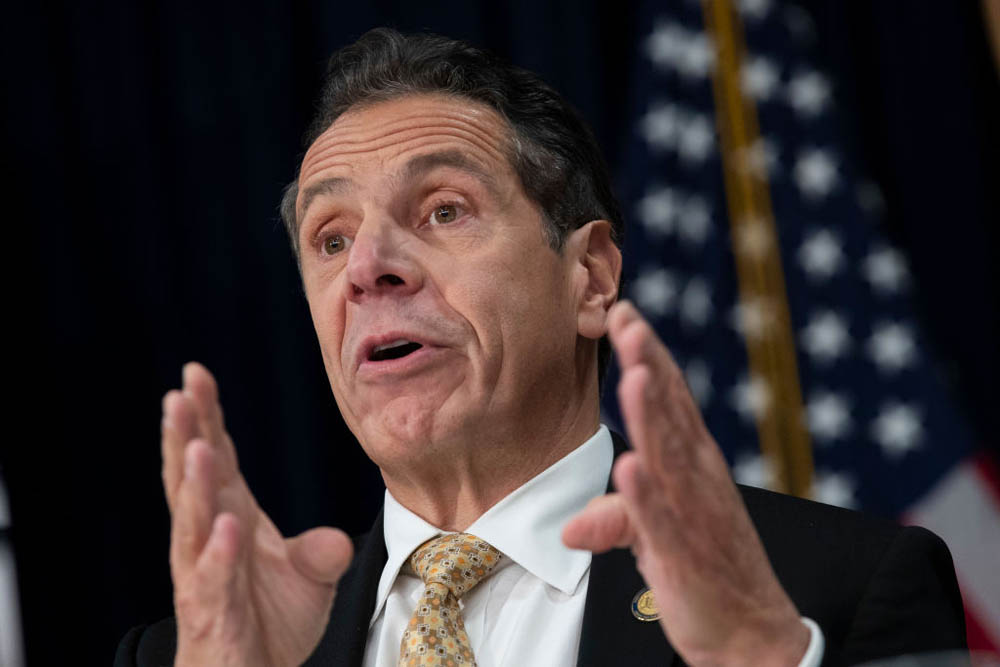Since 2015, Gov. Cuomo has been hyping his scheme to remake the state’s electric grid so that by 2030 half of the state’s electricity will come from renewable sources.
But Cuomo’s ambition — to prove his renewable-energy bona fides and thus position himself as a viable Democratic candidate for the White House in two years — is colliding headlong with reality.
Indeed, two events Monday, one in Albany and the other in the upstate town of Somerset, showed just how difficult and expensive his plan has become and how New York ratepayers will be stuck with the bill.
In Albany, the New York State Energy Research and Development Authority released its “offshore-wind master plan.” The agency said it was “charting a course to 2,400 megawatts” of offshore capacity to be installed by 2030. That much capacity (roughly twice as much as now exists in all of Denmark) will require installing hundreds of platforms over more than 300 square miles of ocean in some of the most navigated, and heavily fished, waters on the Eastern Seaboard.
It will also be enormously expensive. According to the latest data from the Energy Information Administration, by 2022 producing a megawatt hour of electricity from offshore wind will cost a whopping $145.90.
Offshore wind promoters claim costs are declining. Maybe so. But according to the New York Independent System Operator, the average cost of wholesale electricity in the state last year was $36.56. Thus, Cuomo’s presidential ambitions will require New York consumers to pay roughly four times as much for offshore electricity as they currently pay for juice from conventional generators.
Why is the governor pushing so hard for offshore wind? The answer’s simple: The rural backlash against Big Wind is growing daily.
Just a few hours after NYSERDA released its plan, the Somerset town board unanimously banned industrial wind turbines. The town (population: 2,700) is actively opposing the proposed 200-megawatt Lighthouse Wind project, which, if built, would be one of the largest onshore-wind facilities in the Northeast.
Wednesday, Dan Engert, the supervisor in Somerset, told me his “citizens are overwhelmingly opposed” to having wind projects built near their homes and that Somerset will protect “the health, safety and rural character of our town.”
Numerous other small communities are fighting the encroachment of Big Wind. In the Thousand Islands region, towns like Cape Vincent and Clayton have been fending off wind projects for years. Last May, the town of Clayton approved an amendment to its zoning ordinance that bans all commercial wind projects.
Last September, the Fort Drum Regional Liaison Organization announced its opposition to eight proposed onshore-wind projects due to the deleterious effect those projects could have on radar systems and military aviation. The move by the Watertown-based group, which is dedicated to assuring Fort Drum’s future, will likely derail more than 1,000 megawatts of proposed wind-generation capacity.
The onshore backlash has left Cuomo with no choice but to move his renewable-energy obsession offshore. Last year, in his State of the State Address, Cuomo touted the fact that all of the proposed wind turbines will be so far offshore that “Not even Superman standing on Montauk Point” will be able to see them. The Man of Steel may not be able to see them, but plenty of fishermen will, and they are none too happy at the prospect of having hundreds of offshore platforms obstruct their fishing.
To protect their interests, fishermen and fishmongers from New York, New Jersey, Rhode Island and Massachusetts have filed a federal lawsuit to block an offshore wind lease won by Norwegian oil company Statoil ASA, at the site of one of the best squid and scallop fisheries on the Eastern Seaboard. That lawsuit is still pending.
In short, Cuomo’s push for offshore wind shows how desperate he is to show his pals at the Natural Resources Defense Council and the Sierra Club how much he loves renewable energy. Never mind that New York’s electricity prices are already 40 percent higher than the US average or that his offshore scheme will send those rates even higher.
As Dan Engert asked me Wednesday, “Who is looking out for the ratepayers? That’s the question that should be put to the governor.”
This piece originally appeared in the New York Post
______________________
Robert Bryce is a senior fellow at the Manhattan Institute and author of the new report, After Indian Point: Lights Out for New York City? Follow him on Twitter here.
This piece originally appeared in New York Post
